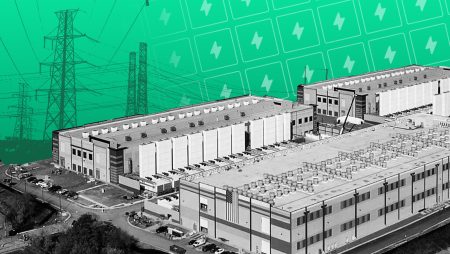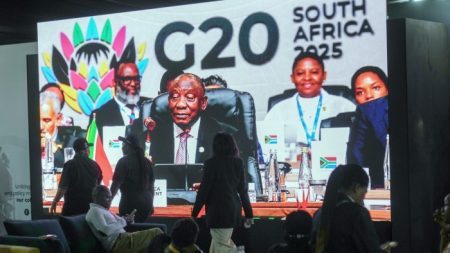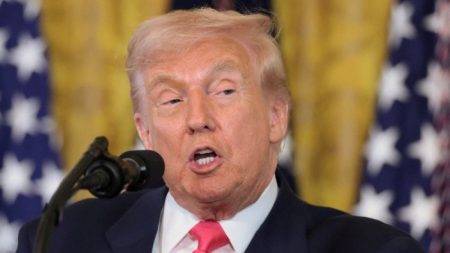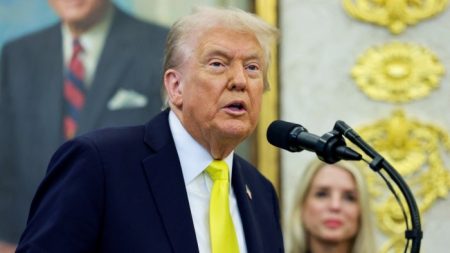Unlock the Editor’s Digest for free
Roula Khalaf, Editor of the FT, selects her favourite stories in this weekly newsletter.
The US added 175,000 jobs in April, well below expectations and the smallest rise for six months, as the labour market cools in the world’s largest economy.
Friday’s non-farm payrolls figure for last month compared with forecasts of a 241,000 rise in a Bloomberg poll, raising expectations that the Federal Reserve might cut interest rates earlier than previously thought.
The release comes after the US central bank signalled on Wednesday that interest rates were set to remain at a 23-year high of 5.25 to 5.5 per cent for even longer than anticipated, as it wrestles with persistent inflation.
Traders in the futures market initially responded to the data by bringing forward expectations for when the Fed’s first interest rate cut this year might happen — to September, from November before the data. However, traders had backed off that nearer-term outcome by mid-afternoon trading in New York. Almost two quarter-point cuts this year are now priced in by the futures market.
The two-year Treasury yield, which moves with interest rate expectations was down 0.07 percentage points at 4.81 per cent in late afternoon trading on Wall Street, but had been down as much as 0.16 percentage points at a one-month low shortly after the report was released. The S&P 500 closed 1.3 per cent higher in its biggest one-day gain since late February.
US unemployment rose slightly to 3.9 per cent, compared with estimates of 3.8 per cent. Friday’s figures also represented the slowest pace of monthly job growth since October 2023.
Revisions to data for February and March showed that 22,000 fewer jobs were created than previously reported. The slowdown in job creation was most pronounced in leisure and hospitality, construction and the government sector, while employment remained strong in healthcare and retailing.
The report also showed average weekly hours worked edged lower and earnings growth was soft.
“It was a record, or near record, warm winter, which might have boosted employment growth a bit, and now we’re returning to trend,” said Paul Ashworth, chief North America economist at Capital Economics. “But this definitely gets the market thinking that rate cuts might not be off the table — because it’s not just a slowdown in employment growth, you’ve also got pretty weak average hourly earnings.”
Even with the labour market cooling, the Fed’s next steps will be driven more by inflation data, given concerns that it has not been coming down as rapidly as hoped by officials. “The inflation readings will call the tune for the Fed,” said Kathy Bostjancic, chief economist at Nationwide.
However, the figures will probably dampen any discussion that the Fed may be forced to raise interest rates further to stamp out an overheating economy, which will be a relief for the US central bank.
“This is still a very strong jobs report — there’s not a lot of indication that there are cracks forming in the labour market,” said Ryan Sweet, chief US economist at Oxford Economics. “Overall, this is what the Fed has been wanting to see: softening in job growth, and the job market cooling a little bit or just rebalancing.”
However, Citi US economist Veronica Clark said she was “a bit worried” about Friday’s report being the “first sign” the labour market could be slowing down. “The hiring rate is falling, hours worked are coming down and part-time, unstable work is rising. All these signs that businesses are looking to cut labour costs.”
With less than six months before the US election, President Joe Biden described the data as another sign of the resilient economy under his watch. “The great American comeback continues,” he said in a statement.
“When I took office, I inherited an economy on the brink, with the worst economic crisis in a century. I had a plan to turn our country around and build our economy from the middle out and the bottom up. Now we are seeing that plan in action.”
Read the full article here














